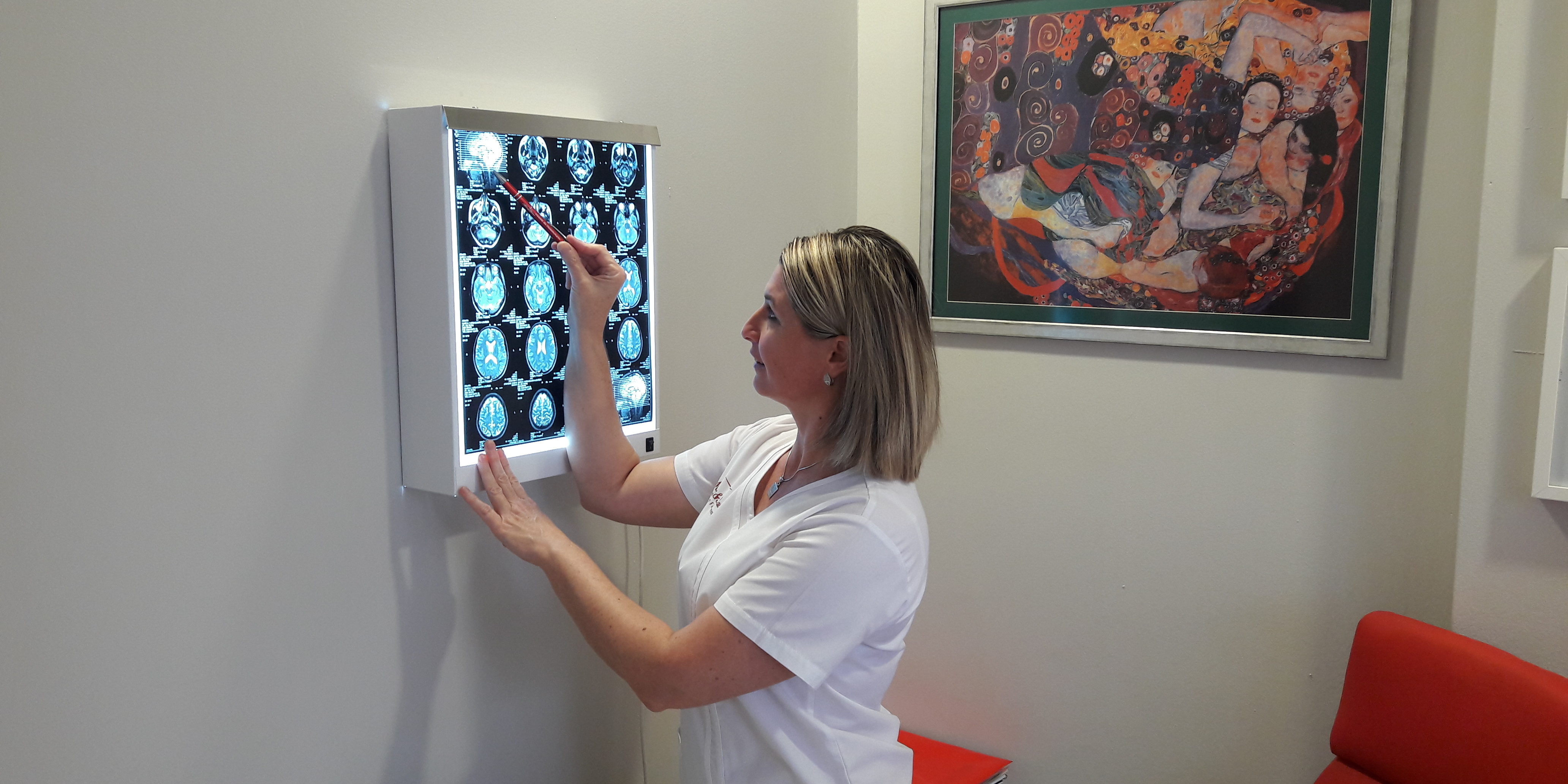TEMPOROMANDIBULAR ARTICULATION AS A FREQUENT AFFECTION OF TRAUMATOLOGY
The temporomandibular joint is a uniform joint that joins the lower jaw with the skull. The temporomandibular joints are joints that are used a lot during the day. Hence the possibility of numerous overloads occurring not only within them, but also dysfunctions throughout the body. These joints perform approximately 1800 opening and closing movements of the mouth during the day, acting unconsciously. They participate in activities of eating, yawning, speaking, while brushing their teeth, they sing. The temporomandibular joints are functionally connected, through the muscles and ligaments that surround them, with the cervical spine. As a result, the headaches that occur, the neck pain can be the result of its malfunction.
ATM PHYSIOTHERAPY
In the vicinity of the TMJ are numerous blood vessels and nerves, which in the case of dysfunction of the joint can cause neurological symptoms, dizziness, nausea, tinnitus or ringing in the ears.
CAUSES OF TEMPOROMANDIBULAR ARTICULATION DYSFUNCTIONS
Dysfunction of the occlusion of the mouth, lack of teeth, biting the nails, biting the lips, the use of dentures, defective posture, injuries in the craniofacial region, surgery, bruxism, the involuntary creaking of the teeth, chewing gum, Stress, squeeze the teeth.
WHAT SYMPTOMS ARE THE MOST COMMON?
There are a variety of symptoms that may be linked to TMJ disorders. The most common symptom is pain, especially pain in the muscles of the mastication or in the mandibular joint. Other possible symptoms include:
- pain radiating from the face, jaw or neck,
- stiffness in the muscles of the jaw,
- limited movement or blockage of the jaw,
- noises like clicks or thunders that cause pain in the jaw joint when opening or closing the mouth,
- a change in the way the upper and lower teeth fit together.
- Earaches, tinnitus, ringing in the ears,
- dizziness and nausea,
- headaches, also migraines
ATM PHYSIOTHERAPY
- Physiotherapy as a conservative treatment uses:
- Thermotherapy, manual therapy, mobilization of soft tissues inside and outside the mouth, kinesitherapy,
- Kinesiotaping, therapeutic physical exercise.
Before applying the physiotherapy treatment, the most important thing is to conduct an exhaustive interview and examine the patient. The above will allow us to use the most appropriate treatment method. For the patient it is very important to learn to relax, so personalized autotherapy is recommended.






